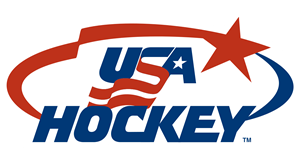Jersey Sizing

Hockey players need jerseys, but hockey fans buy them, too. So, whether you’re in the game or watching it, knowing how to size and fit a hockey jersey is important before you make the mistake of ordering based on your shirt size. Some hockey jersey styles run big, and others run small. Fortunately, there’s a standard rule of measurement to help you find the right size. This guide on how to buy and how to size a hockey jersey offers detailed instructions on sizing, fitting, and cleaning.
WHAT SIZE HOCKEY JERSEY SHOULD I BUY?
The right hockey jersey size is roomy enough to fit loosely over your shoulder pads or chest protector. Getting an accurate size isn't difficult—all you need is a tape measure and a sizing chart. Also, try on the jersey while you’re wearing your pads, instead of without them.
Be aware that different manufacturers may size their jerseys differently. Spend a moment researching the sizing chart for your desired jersey manufacturer.
HOW TO MEASURE FOR A HOCKEY JERSEY
To determine hockey jersey size, you’ll measure your chest/width, length, and sleeve length—corresponding to the letters A, B, C in the graphic ABOVE.
CHEST/WIDTH
For an accurate chest measurement, dress as you would for the game: Wear your undergarments and shoulder pads/chest protector. Then measure around the fullest part of the chest, just under the armpits. Usually, chest/width is the A measurement you'll see on a general or brand-specific sizing chart.
LENGTH
Next, measure from the top of your shoulder pad to the hip. This number is your length, typically the B measurement on a size chart. Players tend to know whether they prefer a longer jersey, but this B measurement is also an important one for fans to consider: Do you want your jersey to hang below your waist? How far? For example, some women like to wear a hockey jersey like a short dress and thus will want a long "B" measurement, though a similarly ultra-long jersey might look silly on someone else.
Pro Tip: If you’re new to the sport, know that nobody tucks in a hockey jersey. NHL players are not allowed to (see NHL item 9.5, the "tuck" rule) so fans don’t do it either. Leaving the shirt untucked is part of hockey culture.
SLEEVE LENGTH
Finally, obtain your hockey jersey sleeve length. With arms extended to the sides, measure from the center of the back of your neck to the wrist. This number is the C measurement on most sizing charts. If you're buying your own jersey for team play, make sure you know whether your team uses a ¾ or full-length sleeve.
Now that you have your measurements, compare them to those on the manufacturer's sizing chart and make your selection. If you're buying a jersey for fashion, the measuring process is the same, but you'll make adjustments for the look you want.
HOW SHOULD A HOCKEY JERSEY FIT?
For the player, a team jersey is part of the overall equipment package: It should fit loosely over the protective gear and be baggy enough to provide unrestricted movement. The sleeves are supposed to be short if your team requires ¾ sleeves, but the sleeves will be regular length otherwise.
For fans, purchasing an NHL jersey to represent their favorite team is more about personal preference, so fit is more subjective. If you’re headed to your first game at the rink and you’re unsure about what to wear under a hockey jersey, remember that layering is key. Start with a T-shirt, and then wear a looser, long-sleeved shirt over that. If two layers don’t feel like enough, finish with a hoodie or lightweight jacket.
WHAT DO THE “C” AND “A” LETTER PATCHES MEAN ON A HOCKEY JERSEY?
A few players on the team wear "C" or "A" patches on the top-left or top-right front of their jerseys.
The "C” stands for captain—the team captain. In hockey, the team usually elects the captain, who is allowed to speak to the referees and ask for rule interpretations, which he relays to the coaches and other players on the bench. The captain is the only player on the team with this authority. The "A" stands for alternate captain. This player performs the same role if the captain is on the bench. There may be more than one alternate captain.
Both patches are earned, so you won’t find them on practice or team jerseys you buy off the rack.
WHAT TO WEAR TO A HOCKEY GAME IF YOU DON’T HAVE A JERSEY
If you don’t have a jersey, there are other ways to stay warm and show support for your team. For new fans, knowing what to wear to a hockey game gives you confidence to fit in as you head to the rink. Dress warmly in layers repping your team colors, or add a team hat or specialized spectator jacket for hockey to your wardrobe. If you’re a player without a jersey, check with your coach or captain about the appropriate garment to wear over your pads.
HOW TO CLEAN A HOCKEY JERSEY
Throw your jersey into the washing machine and use special detergent formulated for removing stains and odors without damaging synthetic fabrics. Wash on the gentle cycle in warm water. Never use bleach or detergents with bleach. If you wash your jersey with other gear, make sure you close any velcro tabs so they don’t snag your jersey during the cycle.


